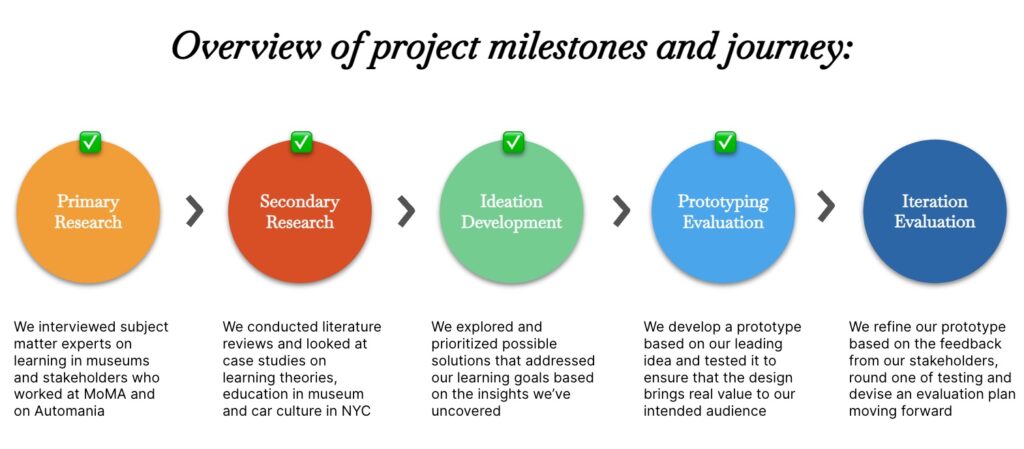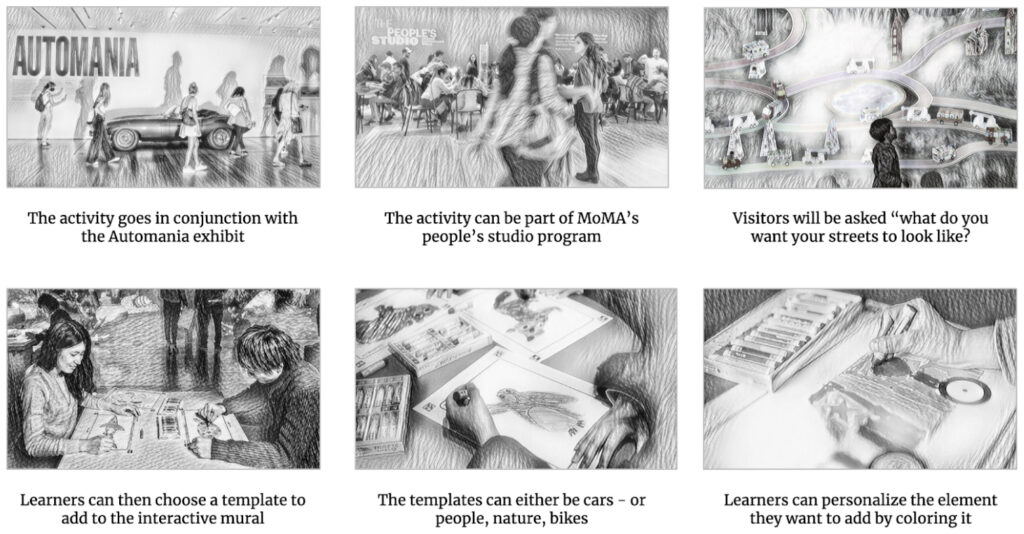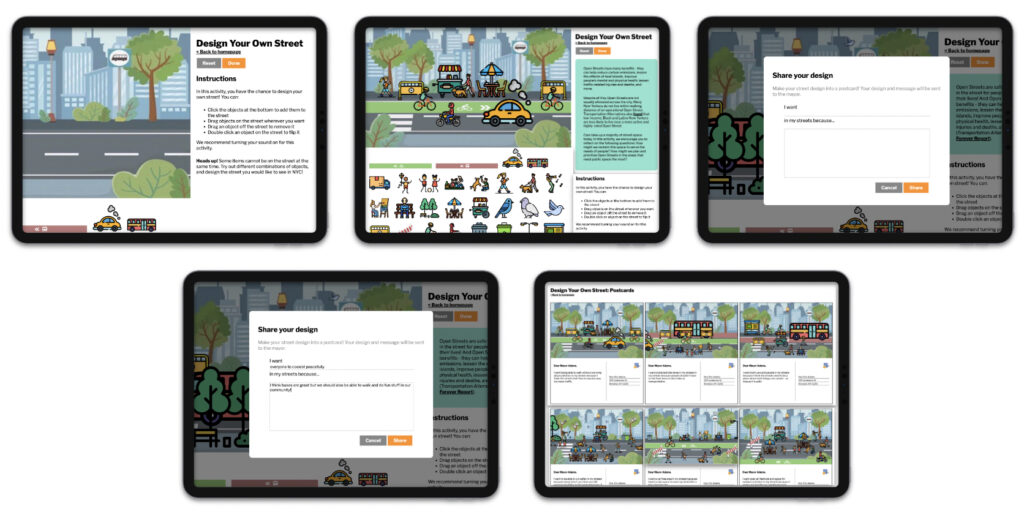Design Your Own Streets
Designing a complimentary educational experience that helps visitors of MoMA's Automania exhibition to think more critically about their relationship with cars
During Spring in our Design Process for Learning class, we were tasked to undertake a semester long project that tackles a real-life learning design challenge. We were given the autonomy to choose the context, target audience and stakeholders that we want to address. I had the opportunity to work with three other students who all wanted to design a learning solution for a museum. Together, we were able to connect with educators working at the Museum of Modern Art (MoMA) to reimagine an educational experience for one of their past exhibitions.
Reimagining Automania
The Museum of Modern Art (MoMA) is one of New York City’s most prominent museums and the first museums devoted to the modern era. In July 2021, MoMA launched Automania – an exhibition on cars and car culture in the 20th century.
Through Automania, MoMA hoped to create an exhibition that explores the complicated relationship people have with cars by highlighting the aesthetic beauty and emotional attachment we have to the automobile, but also how car culture can be environmentally and culturally destructive (The Metropolitan Museum of Art, n.d.-a).
However, the way the exhibit and its corresponding materials have been developed has largely emphasized mostly the aesthetic, artistic and emotional values of car culture. This presents an opportunity and need for educational programs to get the audience of Automania to think more critically about cars, particularly in the context of societal conflicts over the negative impact of cars, including the fight over climate change and open streets initiatives in New York City.
This leads us to the following challenge:
How might we design a learning experience that will inspire visitors of Automania to reflect upon their relationship with cars and reappraise the future of New York City’s car culture?


Three fundamental key design decisions:

Learning Goals:
Learners will attain a deeper critical awareness about car culture and its impact on their daily lives.
Learning Objectives:
Learners will be able to identify:
- At least 2-4 negative environmental and/or cultural impacts of cars and car culture.
- At least 1 possible community, individual or legislative opportunity to mitigate the destructive impact of car culture.
Learners will believe/feel:
Engaged and optimistic that car culture can change in a way that positively impacts daily life in NYC.
After our brainstorming session, we converge on one winning idea:
Whose streets? Our streets!
Congruent with our key design decisions and taking inspiration from Team Lab’s Sketch Town, we wanted to design a collaborative mural where learners get to create their own ideal streets – and by extension, reclaim the space as their own. Below is an initial storyboard of our overarching idea:


Final Product
At first, we tested the idea through a low fidelity prototype made up of papers and sketches to our peers in the classroom. Based on the feedback that was given, we decided to iterate our initial idea from a mural to a tabletop digital game. The Design Your Own Street is intended to be an urban planning game that invites learners to construct their own ideal streets. These designs will be turned into a digital postcards where learners will be asked to co-sign their designs and sent a personalized message to the mayor of New York City.

Logic Model:

Acknowledgements:
Courses
EDCT-GE – 2158 Design Process for Learning
Professor
Kayla DesPortes
Team Members
Sarah Eisenstein
Stephanie Sinwell
Athia Fadhlina